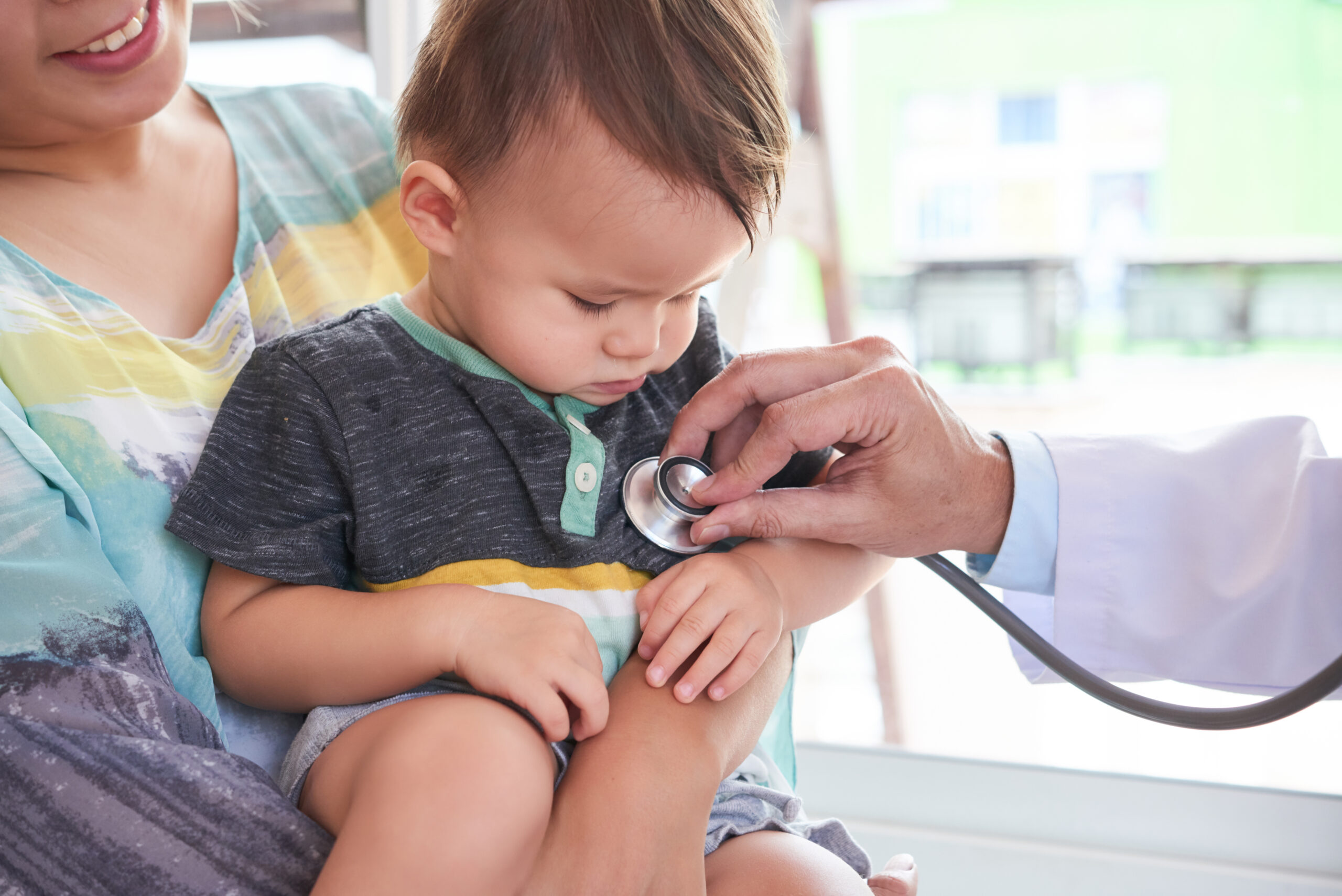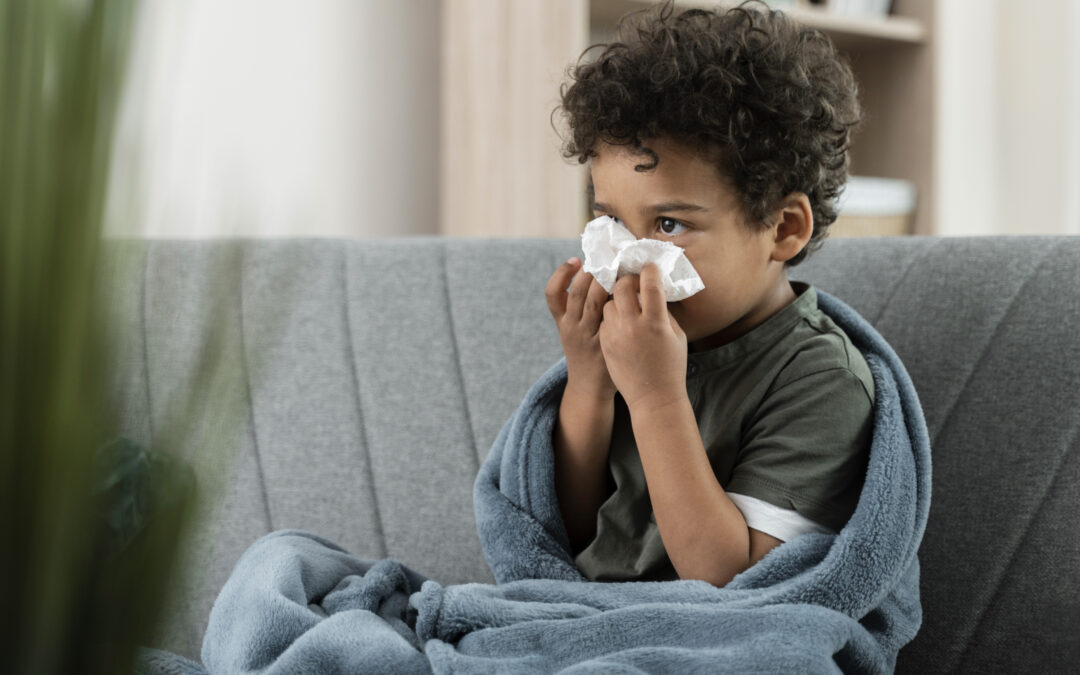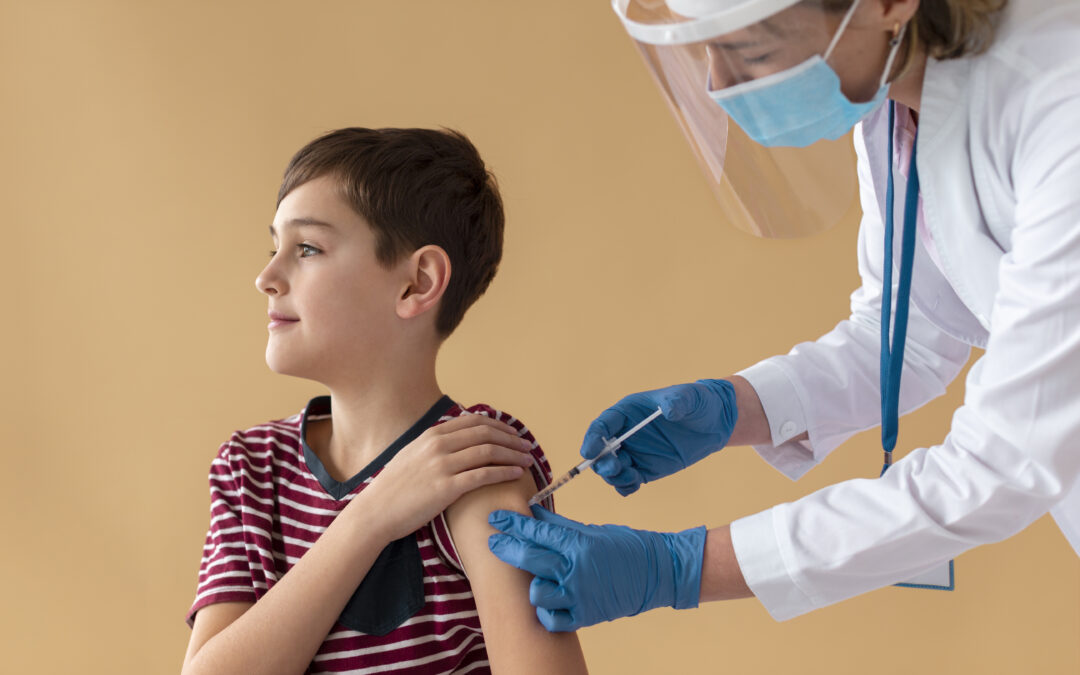
by Little Stars & She | Aug 28, 2024 | Child Health
In the world of healthcare, there’s one crucial element that underpins everything: accurate diagnosis. It’s the starting point of the journey towards better health and well-being. We’ll explore why diagnostic accuracy is paramount in healthcare, touching upon its far-reaching impact on patients, healthcare providers, and the healthcare system at large.
Prompt Treatment and Effective Management
Imagine this: you’re not feeling well, but your doctor accurately pinpoints the issue right away. This means timely treatment, quicker relief, and less suffering. Accurate diagnosis helps prevent illnesses from progressing, which ultimately makes healthcare more efficient and effective.
A-Pillar of Patient Safety
Patient safety is non-negotiable. A wrong diagnosis can lead to incorrect treatments, unnecessary procedures, or even life-threatening delays in care. Precise diagnoses minimize these risks, ensuring patients stay safe throughout their healthcare journey.
Trust Between Patients and Providers
Trust in healthcare is everything. Patients are more likely to trust their healthcare team when they see that their diagnoses are on point and that treatments are effective. This trust is the foundation for open communication and patient compliance.
A Vital Tool for Disease Surveillance
During public health crises, precise diagnoses are a lifeline. They enable swift containment efforts and reduce the spread of diseases, safeguarding communities from outbreaks.
Reliable Research and Data
Accurate diagnoses are the bedrock of medical research and data analysis. Researchers rely on precise diagnostic information to study diseases, treatments, and outcomes effectively. It also empowers healthcare organizations and policymakers to make informed decisions to enhance care quality.
Legal and Ethical Considerations
Accurate diagnosis isn’t just about medicine; it’s about ethics and the law too. Healthcare providers have a legal and ethical duty to offer competent and precise diagnoses. Errors can lead to legal troubles and damage a provider’s reputation.
Embracing Personalised Medicine
The era of personalized medicine hinges on precise diagnoses. It’s about tailoring treatment plans to each patient’s unique characteristics. Accurate diagnoses form the foundation of this revolutionary approach to healthcare.
At ‘Little Stars & She,’ we understand the paramount importance of diagnostic accuracy, especially when it comes to the health of children and women. We take every precaution to ensure our diagnoses are as accurate as can be because we know that accuracy is the key to better health outcomes.
So, whether you’re a parent seeking care for your child or a woman in need of specialized healthcare, rest assured that ‘little stars & she’ is committed to providing you with the most accurate diagnoses and the highest quality care. Your health is our top priority, and we’re here to guide you on your journey towards better well-being.
Conclusion
In conclusion, diagnostic accuracy is the linchpin of healthcare. It paves the way for timely treatment, patient safety, cost-effective care, and trust between patients and providers. It’s a vital tool for disease surveillance, research, and ethical practice.

by Little Stars & She | Aug 14, 2024 | Child Health, Dengue
What is Dengue Fever?
Dengue fever is a viral illness spread by mosquitoes, especially Aedes aegypti. It is common in tropical and subtropical regions like india
Symptoms of Dengue Fever
Dengue fever presents with a range of symptoms, which usually appear 4-10 days after a mosquito bite. Common symptoms include:
High Fever: Often starts suddenly and can reach up to 104°F (40°C). The fever typically lasts for 2-7 days.
Severe Headache: This pain is usually located behind the eyes and can be quite intense.
Muscle and Joint Pain: This can be severe and is sometimes intense.
Nausea and Vomiting: These symptoms may occur along with fever.
Rash: A rash may develop a few days after the onset of fever, sometimes looking like a measles-like rash.
Mild Bleeding: Symptoms might include nosebleeds, bleeding gums, or easy bruising.
How Dengue Fever Spreads
Dengue fever is spread through the bite of an infected Aedes mosquito. These mosquitoes are most active during early morning and late afternoon. The virus is not transmitted from person to person through direct contact, but only through mosquito bites.
Preventing Dengue Fever
Preventing dengue fever involves reducing mosquito exposure and controlling mosquito breeding sites:
Avoid Mosquito Bites:
Repellents: Use insect repellent on exposed skin. Look for products with DEET, picaridin, or oil of lemon eucalyptus, which are effective in repelling mosquitoes.
Protective Clothing: Wear long-sleeved shirts, long pants, socks, and shoes to minimize skin exposure, especially during peak mosquito activity times.
Mosquito Nets: Use mosquito nets while sleeping, particularly in areas where dengue is common.
Reduce Mosquito Breeding Sites:
Eliminate Standing Water: Mosquitoes breed in stagnant water. Regularly empty and clean containers such as buckets, flower pots, and pet baths.
Cover Water Storage: Ensure that any water storage containers are tightly covered to prevent mosquitoes from laying eggs.
Use Mosquito Screens: Install or repair screens on windows and doors to keep mosquitoes out of your home.
When to Seek Medical Attention
It is crucial to seek medical care if your child shows symptoms of dengue fever. Early medical attention can prevent complications. Immediate care should be sought if any of the following severe symptoms occur:
Persistent Vomiting: Repeated vomiting can lead to dehydration.
Severe Abdominal Pain: Pain in the stomach area, especially if severe or persistent.
Bleeding Symptoms: Signs include bleeding gums, nosebleeds, or unusual bruising.
Extreme Fatigue: If your child appears unusually tired or restless.
Difficulty Breathing: Trouble breathing or feeling short of breath.
Diagnosis and Treatment
Dengue Diagnosis:
Blood Tests: Diagnosis is confirmed through blood tests that detect the dengue virus or antibodies produced in response to the infection.
Dengue Treatment:
Supportive Care: There is no specific antiviral treatment for dengue fever. Management focuses on relieving symptoms and providing supportive care.
Hydration: Ensure your child stays well-hydrated. Oral rehydration solutions and clear fluids are recommended.
Fever Management: consult your doctor for management of fever and pains. Avoid using NSAIDs like ibuprofen or aspirin as they can increase bleeding risk.
Monitoring: Regular monitoring of symptoms is crucial. In severe cases, hospitalization may be required for intravenous fluids and close observation.
Recognizing Severe Dengue
Severe dengue, also known as dengue hemorrhagic fever or dengue shock syndrome, requires immediate medical attention. Look for signs such as:
Rapid Deterioration: Sudden worsening of symptoms or severe illness.
Severe Bleeding: Including bleeding from the gums or in vomit or stool.
Severe Abdominal Pain: Intense pain in the abdominal area.
Difficulty Breathing: Shortness of breath or difficulty breathing.
Altered consciousness: appearing dull /too sleepy ,decreased activity
Most dengue cases are mild and can be managed effectively with appropriate care and attention. It’s important to remain vigilant and seek medical help if symptoms worsen.
FAQ’s in Dengue
1.How long does dengue fever last?
Dengue fever typically lasts about 2-7 days. The fever usually subsides within this period, but some symptoms, like fatigue, may linger for a few more days.
2.Is dengue fever contagious?
No, dengue fever is not contagious. It is only transmitted through mosquito bites from infected Aedes mosquitoes, not through direct contact with an infected person.
3.How often should I monitor my child’s temperature if they have dengue fever?
Monitor your child’s temperature regularly, at least every 4-6 hours, especially during the first few days of illness when fever is most likely to fluctuate. Record any changes and report significant variations to your healthcare provider.
4.How can I manage my child’s fever at home?
To manage your child’s fever:
Hydration: Ensure your child drinks plenty of fluids, such as water, clear soups, and oral rehydration solutions.
Medication: Use acetaminophen to manage fever and pain, as advised by your healthcare provider. Avoid aspirin and NSAIDs like ibuprofen.
Comfort Measures: Keep your child cool with lightweight clothing and a comfortable room temperature. Use a fan or cool compresses if needed.
5.What should I do if my child develops a rash with dengue fever?
A rash can appear a few days after the onset of fever. Monitor the rash and look for other symptoms. If the rash is accompanied by severe symptoms such as difficulty breathing or bleeding, seek medical attention immediately.
How can I tell if my child’s condition is worsening?
Watch for signs that indicate worsening of the condition, including:
- Persistent or worsening abdominal pain
- Increasing lethargy or irritability
- Frequent vomiting
- Signs of bleeding (e.g., blood in vomit or stools, extensive bruising)
- Difficulty breathing
What is the difference between dengue fever and dengue hemorrhagic fever?
Dengue Fever: The most common form, with symptoms like high fever, headache, joint and muscle pain, rash, and mild bleeding.
Dengue Hemorrhagic Fever (DHF): A more severe form that involves bleeding, blood plasma leakage, and potentially shock. It requires immediate medical attention and hospitalization.
Can dengue fever cause long-term effects?
Most children recover from dengue fever without long-term effects. However, severe cases can lead to complications that may affect overall health. It is important to follow medical advice and attend follow-up appointments to ensure complete recovery.
Is there a special diet that my child should follow during dengue fever?
While there is no special diet for dengue fever, ensure that your child stays well-hydrated and consumes easily digestible foods. Provide a balanced diet with plenty of fluids, and avoid heavy or spicy foods that may irritate the stomach.
What should I do if my child’s symptoms improve but then worsen again?
If your child’s symptoms improve and then suddenly worsen, seek medical attention immediately. This could be a sign of complications or progression to a more severe form of dengue.
What should I do if my child’s condition stabilizes but they continue to have high fever?
If your child’s condition stabilizes but they continue to have high fever:
Ensure Hydration: Continue to provide plenty of fluids to prevent dehydration.
Medication: Use acetaminophen as directed by your healthcare provider to manage fever.
Seek Advice: Consult your healthcare provider if the fever persists for more than a few days or if other symptoms develop.
Can my child go to school or participate in activities while recovering from dengue fever?
Your child should rest and avoid strenuous activities while recovering from dengue fever. Follow your healthcare provider’s advice regarding when it is safe for your child to return to school or resume normal activities.
Can dengue fever be transmitted through breast milk?
No, dengue fever is not transmitted through breast milk. The dengue virus is spread through mosquito bites, not through breast milk or other bodily fluids.
What should I do if my child is recovering from dengue fever but has low appetite?
If your child has a low appetite during recovery:
Encourage Small Meals: Offer small, frequent meals that are easy to digest.
Hydration: Focus on maintaining hydration with fluids such as oral rehydration solutions, clear soups, and fruit juices.
Consult a Healthcare Provider: If the loss of appetite persists or affects your child’s recovery, consult your doctor for advice.
Can dengue fever affect my child’s growth and development?
In most cases, dengue fever does not have long-term effects on growth and development if managed properly. However, severe cases may require medical attention to prevent complications that could impact health.
How does dengue fever affect platelets?
Dengue fever can cause a decrease in platelet count, a condition known as thrombocytopenia. This reduction occurs because the dengue virus affects the bone marrow’s ability to produce platelets and can also lead to increased destruction of platelets. In severe cases, low platelet counts can increase the risk of bleeding complications.
What platelet count is concerning in dengue fever?
In dengue fever, a platelet count below 100,000 platelets per microliter is typically considered concerning and may warrant closer monitoring. Counts below 50,000 can be indicative of severe dengue and increase the risk of bleeding complications.
What symptoms might indicate a problem with platelet count in dengue fever?
Watch for symptoms such as:
Easy Bruising: Unexplained bruises or purpura (small purple spots on the skin).
Bleeding Gums: Frequent bleeding or tenderness in the gums.
Nosebleeds: Repeated or severe nosebleeds.
Prolonged Bleeding: Extended bleeding from cuts or wounds.
Fatigue or Weakness: Increased tiredness or weakness
Can platelet counts return to normal after dengue fever?
Yes, platelet counts generally return to normal after the acute phase of dengue fever as the body recovers from the infection. The recovery period for platelet counts can vary, but most children see an improvement within a few weeks after the fever subsides.
Are there any dietary recommendations for children with low platelet counts?
While there is no specific diet to increase platelet counts, a balanced diet rich in fruits, vegetables, and proteins can support overall health. Ensure your child stays well-hydrated and consult your healthcare provider for any dietary guidelines specific to their condition.
What should I include in a dengue fever first-aid kit for home care?
A dengue fever first-aid kit should include:
Oral Rehydration Solutions: To maintain hydration.
Acetaminophen: For managing fever and pain.
Insect Repellent: To prevent mosquito bites.
Basic Medical Supplies: Such as a thermometer, bandages, and antiseptic wipes.
How does dengue fever impact different age groups in children?
Dengue fever affects children of all ages, but younger children and those with underlying health conditions may be at higher risk for severe complications. Monitoring and early intervention are crucial for managing dengue in all age groups.
What are the signs of dehydration in a child with dengue fever?
Signs of dehydration include:
Dry Mouth: Decreased saliva production.
Reduced Urine Output: Fewer wet diapers or infrequent urination.
Sunken Eyes: Eyes may appear sunken or dark circles may develop.
Lethargy: Increased tiredness or irritability.
Can my child go to school or participate in activities while recovering from dengue fever?
Your child should rest and avoid strenuous activities while recovering from dengue fever. Follow your doctor’s advice regarding when it is safe for your child to return to school or resume normal activities.
What are the most common complications of severe dengue fever?
Common complications of severe dengue fever include:
Dengue Hemorrhagic Fever (DHF): Characterized by bleeding, blood plasma leakage, and a drop in blood pressure.
Dengue Shock Syndrome (DSS): Resulting in severe drop in blood pressure, leading to shock.
Organ Damage: Severe cases may affect the liver, heart, or other organs.
Can dengue fever recur?
Yes, dengue fever can recur. A person who has been infected with one type of dengue virus can be infected with another type in the future. Subsequent infections with different dengue virus serotypes can increase the risk of severe dengue.





